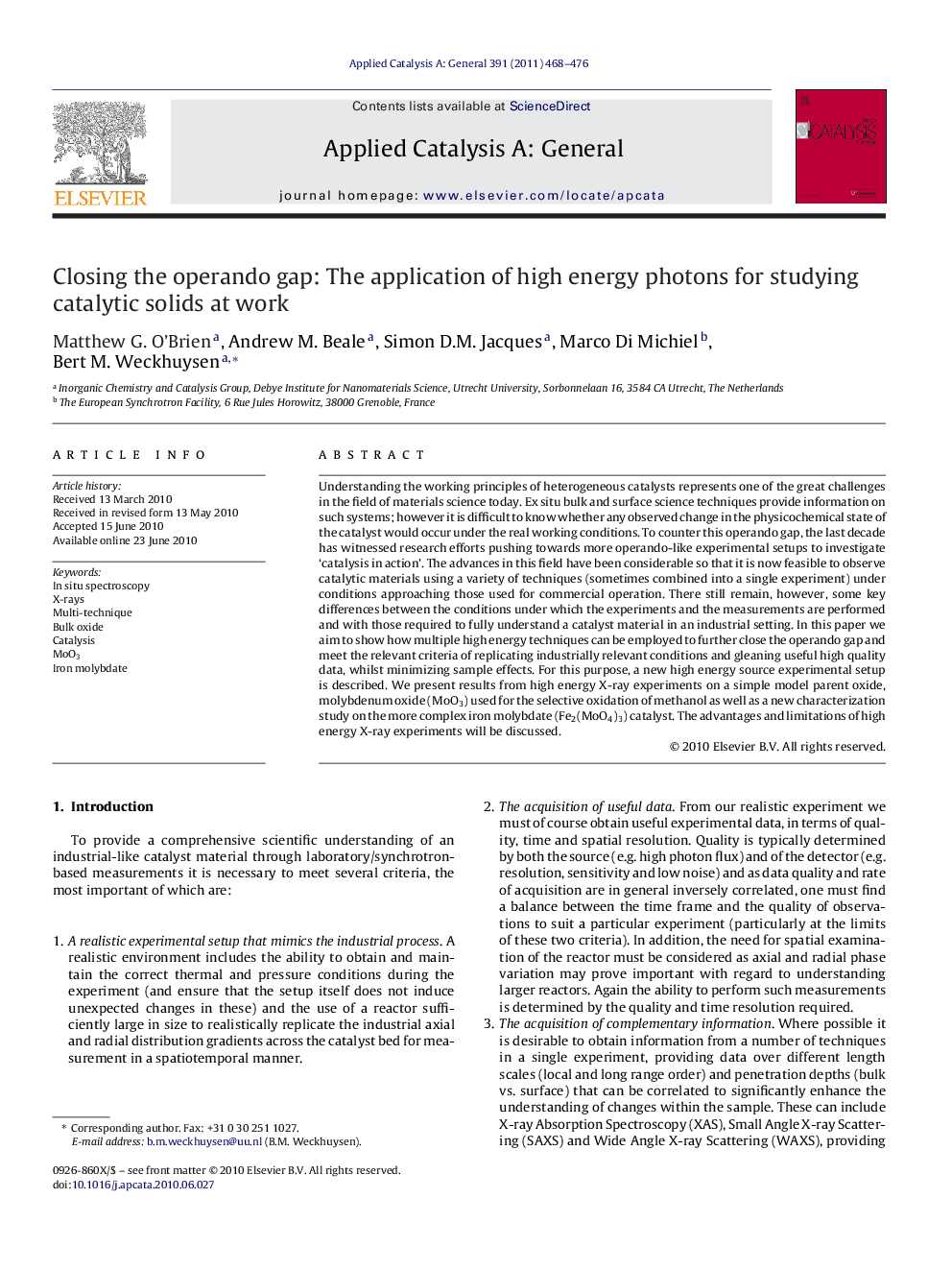| Article ID | Journal | Published Year | Pages | File Type |
|---|---|---|---|---|
| 41670 | Applied Catalysis A: General | 2011 | 9 Pages |
Understanding the working principles of heterogeneous catalysts represents one of the great challenges in the field of materials science today. Ex situ bulk and surface science techniques provide information on such systems; however it is difficult to know whether any observed change in the physicochemical state of the catalyst would occur under the real working conditions. To counter this operando gap, the last decade has witnessed research efforts pushing towards more operando-like experimental setups to investigate ‘catalysis in action’. The advances in this field have been considerable so that it is now feasible to observe catalytic materials using a variety of techniques (sometimes combined into a single experiment) under conditions approaching those used for commercial operation. There still remain, however, some key differences between the conditions under which the experiments and the measurements are performed and with those required to fully understand a catalyst material in an industrial setting. In this paper we aim to show how multiple high energy techniques can be employed to further close the operando gap and meet the relevant criteria of replicating industrially relevant conditions and gleaning useful high quality data, whilst minimizing sample effects. For this purpose, a new high energy source experimental setup is described. We present results from high energy X-ray experiments on a simple model parent oxide, molybdenum oxide (MoO3) used for the selective oxidation of methanol as well as a new characterization study on the more complex iron molybdate (Fe2(MoO4)3) catalyst. The advantages and limitations of high energy X-ray experiments will be discussed.
Graphical abstract. Here we describe how novel high energy X-ray multiple technique setups help bridge the operando gap when measuring catalysts. The advantages of operating at high energies with respect to sample realism, data quality and beam effects are discussed and examples of single point and spatiotemporal line scan measurements on oxide catalysts are presented.Figure optionsDownload full-size imageDownload high-quality image (107 K)Download as PowerPoint slideResearch highlights▶ A new setup for monitoring catalysts under operando conditions was developed. ▶ The high energy synchrotron X-rays allow for more operando measurement. ▶ Increased X-ray energy reduces sample damage. ▶ High quality single point measurements of MoO3 reveals most labile bulk oxygen. ▶ Line scans of Fe2(MoO3)4 reveals spatiotemporal phase and density variation.
